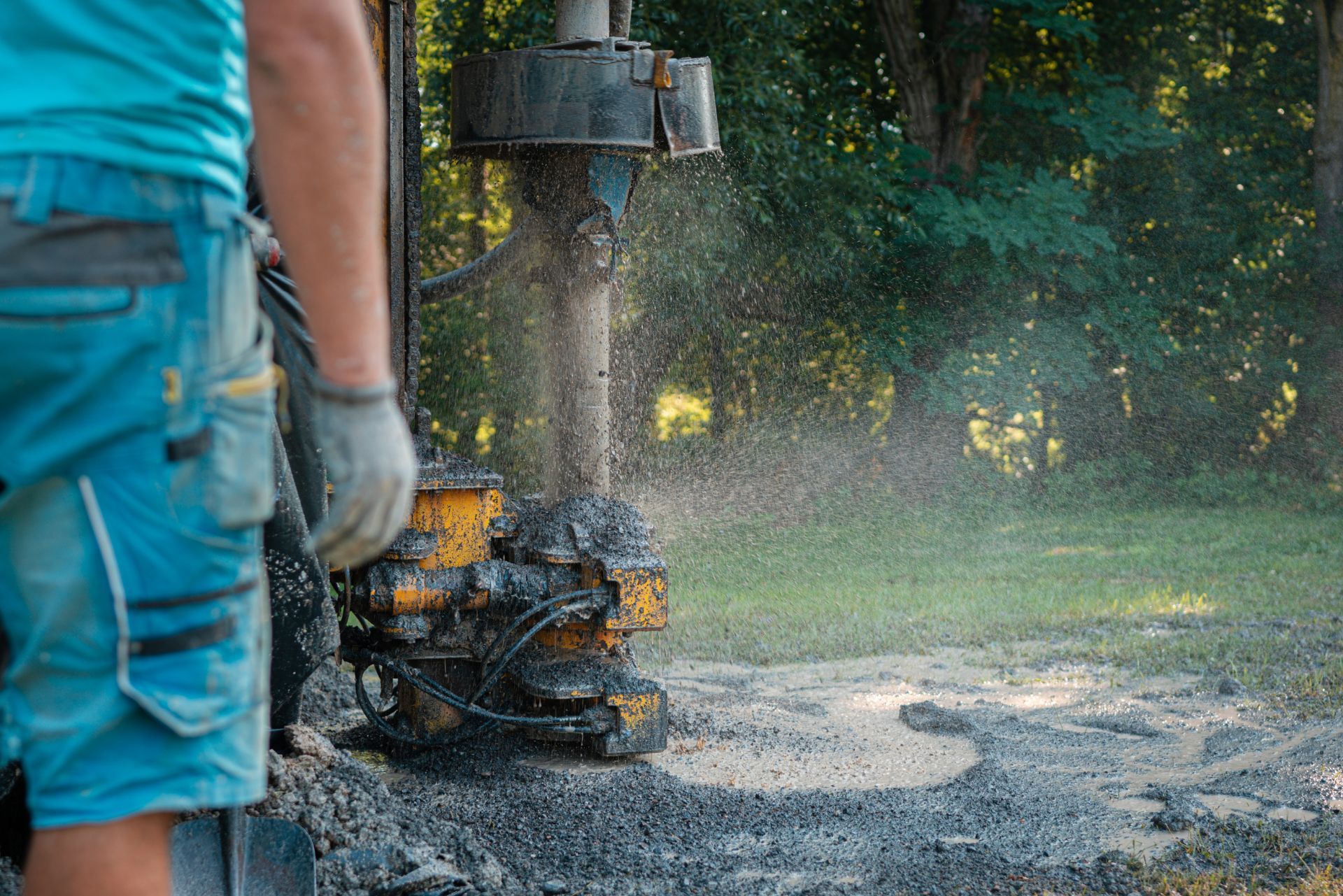Top 3 Recommended Policies

For water well drilling contractors, insurance is not just a regulatory requirement—it’s a critical component of risk management that protects businesses from the unique hazards of the industry. With rising operational costs, increasing claims, and evolving risks, understanding the landscape of well drilling contractor insurance has never been more important. This comprehensive guide explores the key insurance types, current market trends, and expert insights to help contractors make informed decisions and safeguard their operations.
As the water well drilling services industry continues to grow, expected to reach $9.3 billion in 2023 with steady annual growth, contractors face a complex insurance environment shaped by rising premiums and stricter coverage terms. Staying ahead means understanding not only the coverage options but also the broader trends impacting insurance costs and risk management strategies. For more on the industry's growth and challenges, visit the Research and Markets report on the U.S. water well drilling services industry.
Understanding Key Insurance Policies for Well Drilling Contractors
Water well drilling contractors require a suite of insurance policies tailored to the specific risks of their work. The most critical types include general liability, workers’ compensation, vehicle coverage, and specialized well control insurance.
General Liability Insurance
General liability insurance protects contractors from claims related to bodily injury, property damage, and third-party lawsuits arising from daily operations. Given the physical nature of drilling work, this coverage is essential to shield businesses from potentially costly legal expenses.
However, 2024 is seeing significant increases in general liability premiums for water well contractors. According to the National Ground Water Association (NGWA), these increases are driven by higher repair costs and a rise in claims, reflecting the growing financial risks contractors face. This trend has prompted many contractors to reassess their coverage limits and consider additional endorsements to ensure they are fully protected against emerging risks, such as environmental liabilities and equipment failures that could lead to significant financial repercussions.
Workers’ Compensation Insurance
Workers’ compensation covers medical expenses and lost wages for employees injured on the job. Interestingly, despite rising premiums in other areas, workers’ compensation rates in the water well industry have generally trended downward over the past 15 years. Steven Smith from Assured Partners highlights that this decline is largely due to increased awareness and implementation of job safety practices, which have reduced workplace injuries. Furthermore, many contractors are now investing in training programs and safety equipment, which not only enhance employee well-being but can also lead to further reductions in insurance costs as insurers recognize the proactive measures being taken to mitigate risks.
Vehicle and Equipment Coverage
Given the mobile nature of drilling operations, vehicle insurance is another vital policy. Rising repair costs for vehicles and heavy equipment have contributed to premium hikes, mirroring trends seen in general liability. Contractors should ensure their policies adequately cover both owned and leased vehicles to avoid costly gaps in coverage. Additionally, specialized equipment coverage is becoming increasingly important as contractors utilize advanced drilling technologies and machinery. These tools, often representing a significant investment, require dedicated insurance to protect against theft, damage, or operational failures that could disrupt projects and lead to financial losses.
Moreover, as the industry evolves, the integration of telematics and GPS tracking in vehicles and equipment is gaining traction. This technology not only enhances operational efficiency but can also provide data that may help lower insurance premiums. Insurers are beginning to offer discounts for contractors who utilize these technologies, recognizing their potential to reduce accidents and improve safety on job sites. As such, staying informed about these advancements can be beneficial for contractors looking to optimize their insurance expenditures while maintaining robust coverage.

Market Trends Impacting Insurance Costs in 2024
The insurance market for well drilling contractors is undergoing significant changes, influenced by broader economic and industry-specific factors.
Rising Premiums and Stricter Terms
The construction insurance market, which includes well drilling contractors, is experiencing increased premiums and more stringent coverage terms. This shift is largely due to escalating risks and claims across the sector. According to a recent update from WTW, insurers are tightening underwriting standards, making it more important than ever for contractors to maintain thorough risk management practices. Insurers are now scrutinizing contractors' safety records and operational protocols more closely, which means that businesses must invest in training and safety measures to demonstrate their commitment to risk mitigation.
Increasing Operational Costs
Another factor driving insurance costs is the rise in well drilling and completion expenses. A survey by the Dallas Federal Reserve Bank found that 60% of oil and natural gas executives expect drilling costs to rise in 2024. While this survey focuses on oil and gas, the cost pressures often ripple into water well drilling operations, affecting equipment, labor, and materials, which in turn influence insurance claims and premiums. Additionally, the impact of inflation on the supply chain has led to increased prices for essential materials, such as steel and drilling fluids, further squeezing profit margins and necessitating a reevaluation of insurance coverage to ensure adequate protection against unforeseen costs.
Small Business Vulnerabilities
Small well drilling businesses, typically with 1–10 employees, face heightened risks. They account for 57% of fatal construction injuries, underscoring the critical need for comprehensive insurance coverage. These businesses often have fewer resources to absorb losses, making insurance a vital safety net. Moreover, the competitive landscape for small contractors is intensifying, as larger firms often have the capital to invest in advanced technologies and safety measures that can lower their risk profiles. This disparity can leave smaller companies at a disadvantage, emphasizing the importance of tailored insurance solutions that address their unique challenges and vulnerabilities.
Technological Advancements and Their Implications
As the industry evolves, the adoption of new technologies is also influencing insurance costs. Innovations such as automated drilling systems and advanced data analytics are becoming more prevalent, promising increased efficiency and safety. However, these technologies come with their own set of risks, including cybersecurity threats and the potential for equipment malfunctions. Insurers are beginning to factor these technological risks into their pricing models, which could lead to further fluctuations in premiums. Contractors who embrace these advancements must also ensure they have the right coverage to protect against potential liabilities associated with tech failures or breaches, making it essential to stay informed about both industry trends and insurance requirements.
Risk Management and Insurance Coordination
Effective risk management is essential for controlling insurance costs and ensuring adequate coverage. One common challenge in the well drilling sector is the disconnect between field operations and insurance teams. This disconnect can lead to misunderstandings about the specific risks involved in various drilling projects, which can ultimately impact both safety and financial outcomes. By addressing these issues proactively, companies can create a more cohesive approach to risk management that not only protects their assets but also enhances their overall operational efficiency.
Bridging the Gap Between Operations and Insurance
Melissa Scott, Vice President of Towerstone, emphasizes that communication lapses between on-site teams and insurance providers can lead to coverage gaps and delays in claim processing. Contractors should foster close collaboration between safety managers, project supervisors, and insurance brokers to ensure all risks are accurately identified and covered. Regular meetings and joint training sessions can help build stronger relationships and ensure that everyone is on the same page regarding safety protocols and insurance requirements. This collaborative approach not only enhances risk awareness but also empowers teams to make informed decisions that align with both operational goals and insurance policies.
Leveraging Technology for Safety and Risk Reduction
Innovative solutions like machine learning are increasingly being used to forecast and prevent drilling accidents. A recent study demonstrated a model trained on 125 past drilling accidents that can predict about 70% of incidents in real-time. Integrating such technology into operations can reduce accidents, claims, and ultimately insurance costs. Furthermore, the use of drones and IoT devices for real-time monitoring of drilling sites can provide invaluable data that enhances situational awareness and supports proactive risk management strategies. These technologies not only improve safety but also streamline communication between field operations and insurance teams, facilitating quicker responses to potential hazards.
For more details on this cutting-edge approach, see the study
Forecasting the Abnormal Events at Well Drilling with Machine Learning. As the industry continues to evolve, embracing these technological advancements will be crucial for staying ahead of potential risks while also optimizing insurance coverage and costs. By leveraging data analytics and predictive modeling, companies can transform their risk management practices, making them more proactive rather than reactive, which is essential in today’s fast-paced drilling environment.
Choosing the Right Insurance Partner
Selecting an insurance provider familiar with the nuances of the water well drilling industry can make a significant difference in coverage quality and claims handling.
Experienced brokers and insurers understand the specific risks contractors face and can tailor policies accordingly. They also provide valuable guidance on risk mitigation strategies and compliance with regulatory requirements. For instance, they can advise on the importance of regular equipment maintenance and safety training for employees, which not only helps in reducing the likelihood of accidents but can also lead to lower insurance premiums over time.
Given the current market volatility, working with a knowledgeable insurance partner helps contractors navigate premium increases and coverage changes more effectively, ensuring their business remains protected without overpaying. Additionally, a good insurance partner will keep contractors informed about emerging trends in the industry, such as advancements in drilling technology or changes in environmental regulations, which can impact their operations and insurance needs. This proactive approach allows contractors to adjust their policies as necessary, ensuring they are always adequately covered in a rapidly evolving landscape.
Furthermore, the right insurance provider can offer insights into the claims process, helping contractors understand what documentation is required and how to expedite their claims. This support can be invaluable during stressful times, such as after an accident or equipment failure. By fostering a strong relationship with their insurance partner, contractors can benefit from personalized service and a deeper understanding of their unique challenges, ultimately leading to better risk management and peace of mind.

Preparing for the Future
As the water well drilling industry evolves, contractors must stay proactive in managing insurance and risk. This means regularly reviewing policies, investing in safety training, and adopting new technologies to reduce hazards. The integration of advanced drilling equipment, for instance, not only enhances efficiency but also minimizes the potential for accidents, thereby lowering insurance premiums over time. Furthermore, implementing comprehensive safety protocols can foster a culture of safety within the workforce, leading to fewer incidents and a more reliable operation.
Despite the challenges of rising insurance costs and operational expenses, the industry’s growth trajectory remains positive. By understanding the insurance landscape and implementing robust risk management practices, well drilling contractors can secure their business’s longevity and success. This includes staying informed about legislative changes that may impact insurance requirements, as well as exploring alternative insurance options that may offer better coverage at competitive rates. Engaging with industry associations can also provide networking opportunities that lead to shared insights and best practices among peers.
For ongoing updates on insurance trends affecting contractors, the National Ground Water Association provides valuable resources and insights. Additionally, contractors should consider participating in workshops and seminars that focus on risk management strategies tailored specifically for the water well drilling sector. These educational opportunities can equip them with the knowledge necessary to navigate the complexities of insurance and safety regulations effectively, ensuring they remain competitive in an ever-evolving market.
Contact Us
Phone
Location
9595 Six Pines Dr, Suite 8210, The Woodlands, TX 77380

